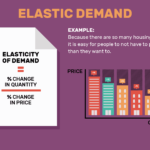Challenges in Calculating National Income: Key Problems and Limitations
Calculating national income is a critical economic exercise that provides a snapshot of a country’s economic health, but it comes with significant challenges. National income represents the total value of goods and services produced in a country and reflects aspects such as productivity, income distribution, and living standards. However, there are complexities and limitations in accurately capturing these figures due to various technical, methodological, and data-related issues. This article explores the primary problems faced when calculating national income and the impact of these challenges on economic analysis.
1. Informal and Unregistered Economy
One of the biggest challenges in calculating national income is the presence of an extensive informal or unregistered economy. This sector includes small businesses, street vendors, and unregistered workers who contribute to the economy but are often not captured in official data. In developing countries, the informal sector can represent a large portion of economic activity. Failing to account for it may lead to an underestimation of the true national income, misrepresenting the country’s economic standing.
2. Valuation of Non-Market Activities
Non-market activities, such as household work, childcare, and volunteer services, add significant value to the economy but are difficult to quantify in monetary terms. Since these services are not traded in markets, assigning them a value is challenging. For instance, a stay-at-home parent contributes labor but does not receive a wage. Excluding these activities from national income calculations can lead to an incomplete picture of the total economic contributions within a country.
3. Difficulty in Avoiding Double Counting
Double counting is a problem that arises when intermediate goods (goods used in the production of final goods) are included in calculations, inflating the national income. To avoid this, only the value of final goods and services should be counted, as including intermediate goods would lead to multiple counts of the same product. However, distinguishing between intermediate and final goods can sometimes be complex, especially in sectors where goods go through multiple stages of processing.
4. Price Changes and Inflation Adjustments
Inflation can distort national income figures, making it difficult to compare income levels over time. Without adjusting for inflation, increases in national income might merely reflect rising prices rather than real economic growth. To counter this, economists calculate real national income, which is adjusted for inflation. However, accurately measuring inflation and price changes across sectors remains a challenging and resource-intensive task.
5. Underground Economy and Tax Evasion
The underground economy, which includes illegal activities and unreported earnings, also poses a challenge in national income calculation. Transactions in this economy, such as unrecorded cash deals or tax-evasive practices, are intentionally hidden from authorities. As a result, the national income may be underestimated because these economic activities are not reflected in official records. While some governments attempt to estimate the size of the underground economy, it remains challenging to quantify accurately.
6. Depreciation and Capital Consumption
National income calculations often need to consider the depreciation of assets, such as machinery, infrastructure, and buildings, which lose value over time. Accounting for this depreciation accurately is essential because it affects the net income produced by an economy. Estimating capital consumption requires detailed data and complex calculations, and incorrect depreciation rates can lead to inaccuracies in the national income figures.
7. Challenges in Data Collection and Accuracy
National income calculations rely heavily on data collected from various sectors, including agriculture, manufacturing, services, and trade. However, data collection can be time-consuming and challenging, particularly in remote or underdeveloped areas. Inaccurate or outdated data, as well as inconsistent data collection methods, can result in errors in national income estimates. Additionally, discrepancies in statistical methods across countries can make it difficult to compare national incomes on a global scale.
8. Impact of Externalities and Environmental Costs
Environmental costs, such as pollution, resource depletion, and ecological degradation, are not directly reflected in national income figures. When industries produce goods and services at the expense of the environment, this economic activity is counted positively in national income, even though it may have a long-term negative impact. Failing to account for these externalities gives an incomplete picture of economic welfare and sustainability, often leading to a higher national income figure that does not reflect environmental realities.
9. Population Changes and Income Distribution
Rapid population growth can affect national income per capita, a measure of income distributed among the population. While national income might increase, if population growth outpaces this increase, the per capita income could fall, impacting living standards. Additionally, national income does not directly account for income inequality. In cases where wealth is concentrated in the hands of a few, the national income figure might appear high, but the majority of the population may not benefit from this economic output.
10. Impact of Subsistence Economy
In some economies, particularly agrarian or developing ones, people consume a portion of what they produce (known as a subsistence economy) rather than selling it on the market. This self-consumption is hard to measure, yet it represents a significant part of economic activity. If subsistence production is not included in national income calculations, it can lead to an undervaluation of total economic activity.
Addressing These Challenges:
Several approaches can help mitigate these challenges:
- Improved Data Collection and Technology Use: Advanced data collection methods, including satellite data, big data analytics, and surveys, can enhance the accuracy of national income calculations, especially in informal and remote sectors.
- Incorporating Environmental and Social Indicators: Including indicators like Genuine Progress Indicator (GPI) and Green GDP can help account for environmental and social factors, providing a more comprehensive picture of national income and economic welfare.
- Consistent Methodologies: Standardizing statistical practices across regions helps improve the reliability and comparability of national income data globally, aiding international economic analysis and decision-making.
- Regular Updates and Adjustments: Periodic updates to calculation methods and inflation adjustments help maintain the relevance and accuracy of national income data.
Conclusion:
Calculating national income is a complex process that faces numerous challenges, from accounting for the informal economy to adjusting for environmental costs and inflation. Each challenge affects the accuracy and reliability of national income figures, which can influence policy-making and economic planning. By addressing these challenges and improving methodologies, economists and statisticians can work towards a more accurate reflection of economic productivity and well-being, helping nations make more informed decisions for sustainable growth.










